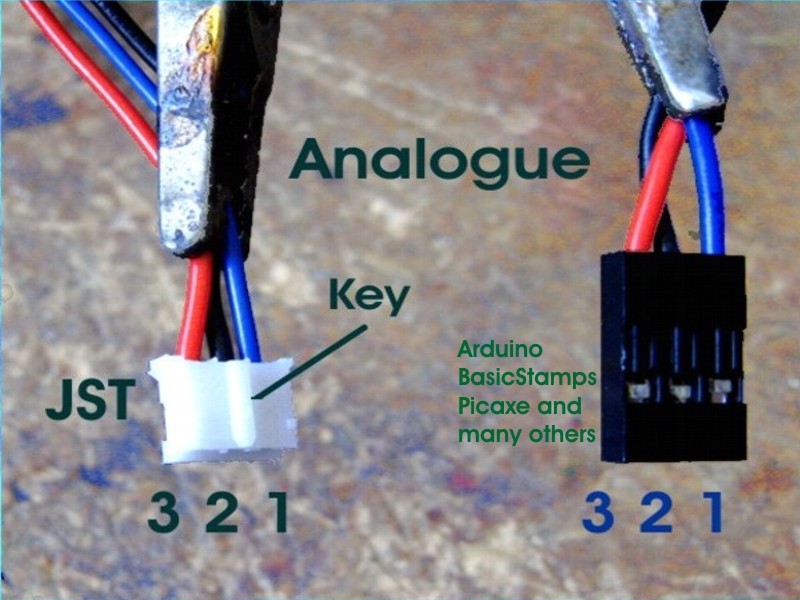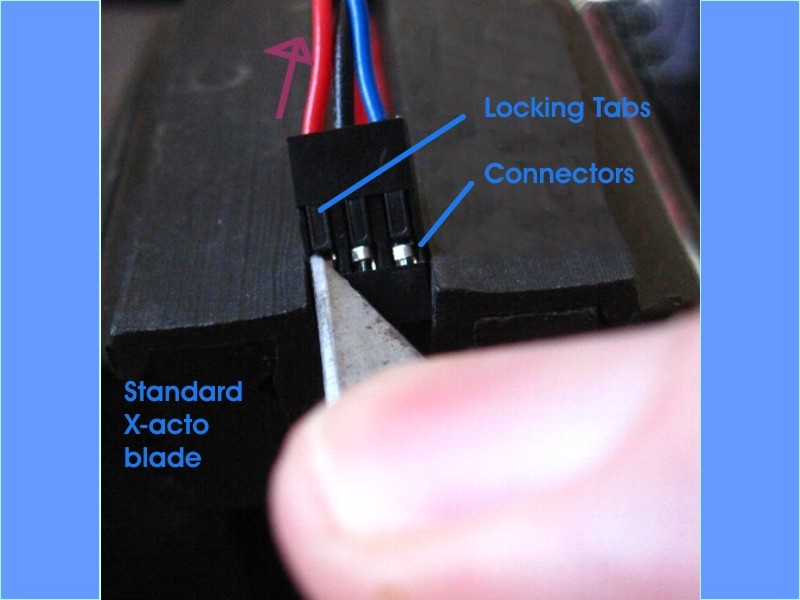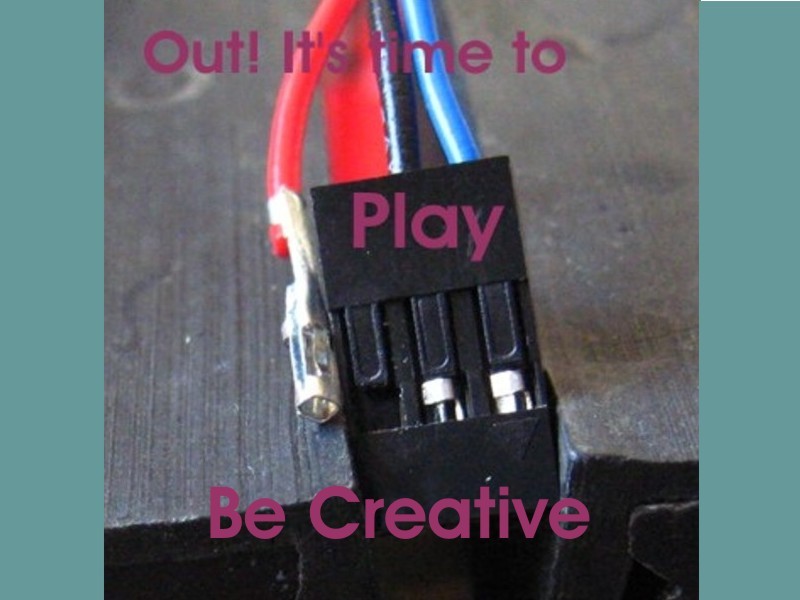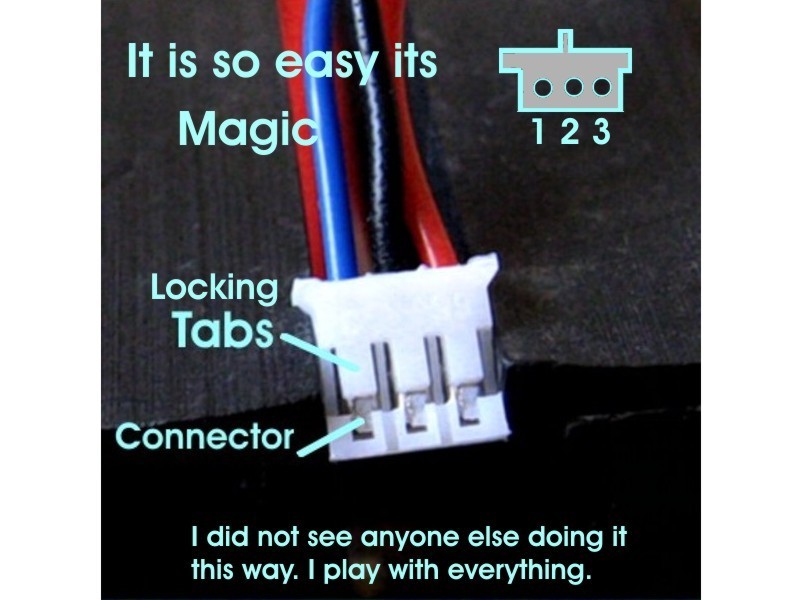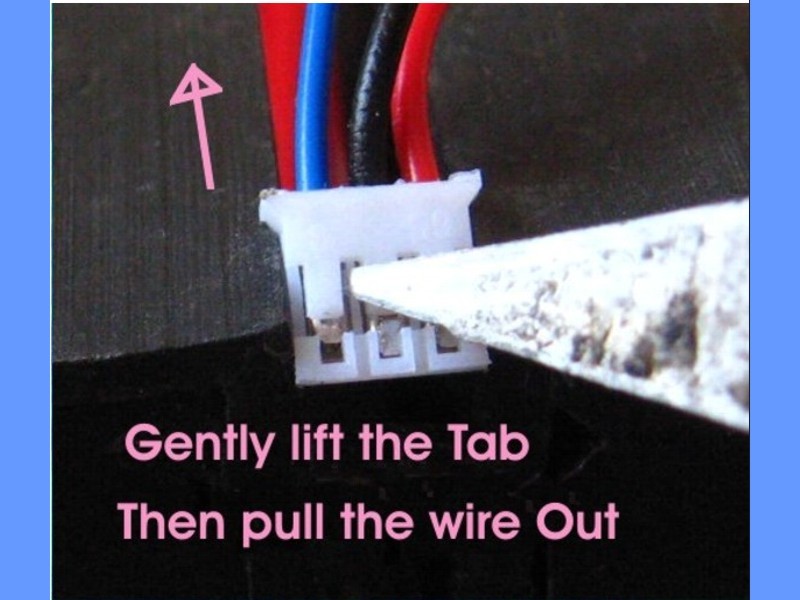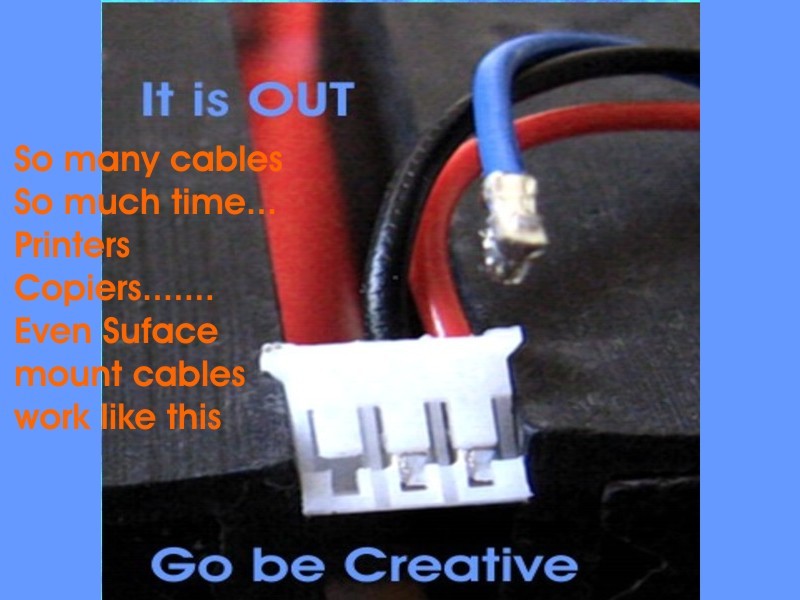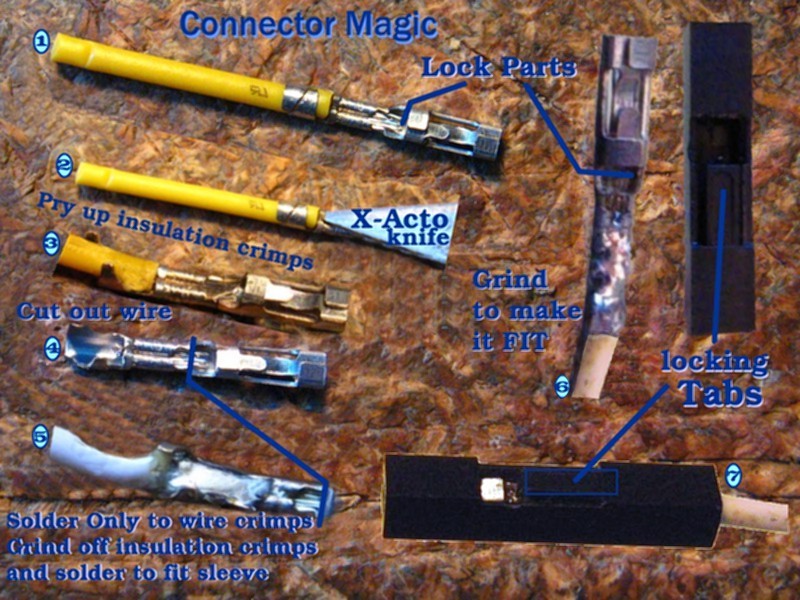I have always been a geek. I tear everything apart to see what I can make of it. I just got into small robots with the LetsMakeRobots.com starter pack and some Basic Stamps and Arduinos. The Let’s Make Robots kit is so complete you just stick it together with double-stick foam tape and it starts running around. I needed an analogue cable for the infrared rangefinder that came in the Let’s Make Robots kit. I made my first one. I will show you how.
I did not find any complete information on the analogue cable I needed. I found bits and pieces that lead me to the Arduino analogue and digital cables. They are not perfect, but they can be made to work if you know a little connector magic. The wires are not in the correct order and the JST connector is too big for the Sharp rangefinder’s connector.
I used to have a connector tool. It looks like a small screwdriver except it is a hollow tube and the front half is open. It works by slipping between the wire and the connector body; it blocks the locking tabs so you can get the connector out. Anything thin like a pin can block the locking tabs too. It does not take too much to play with connectors and make your ideas come together. I did find connector tools on Jameco.com under Tools.




